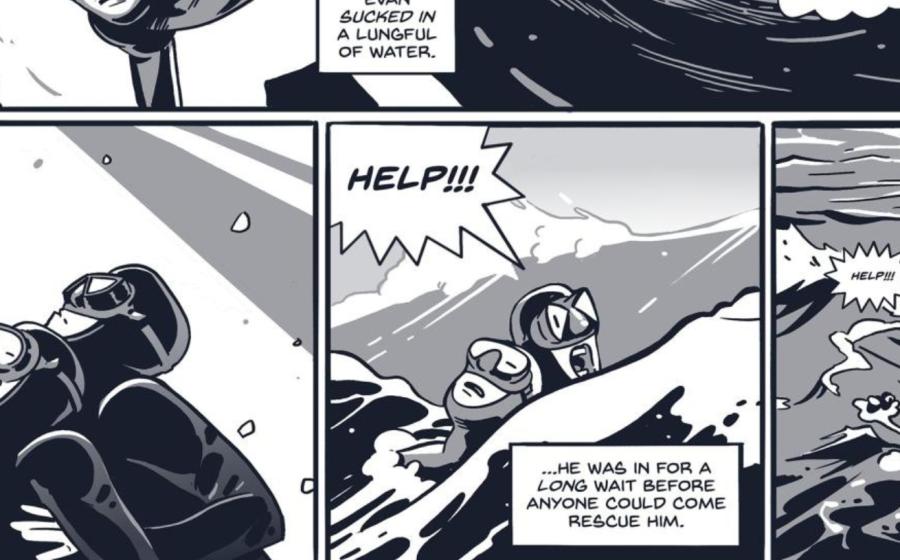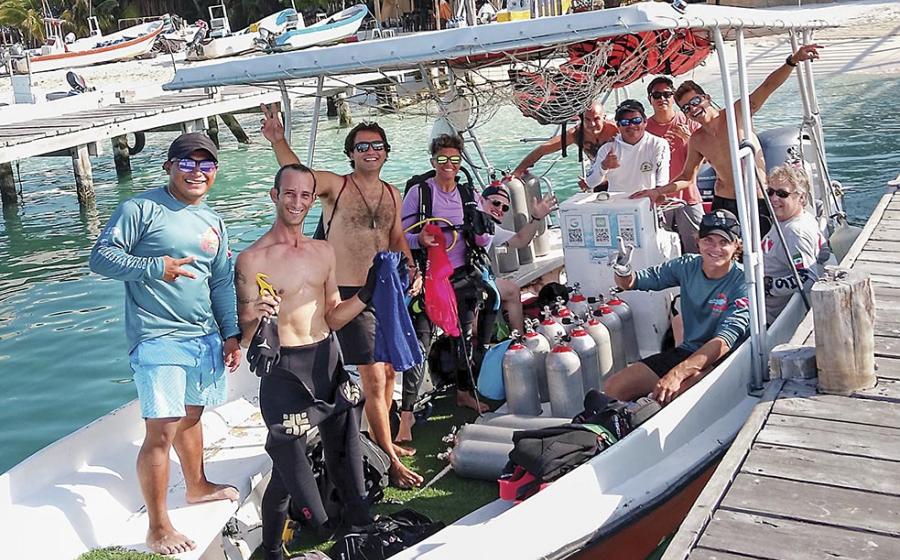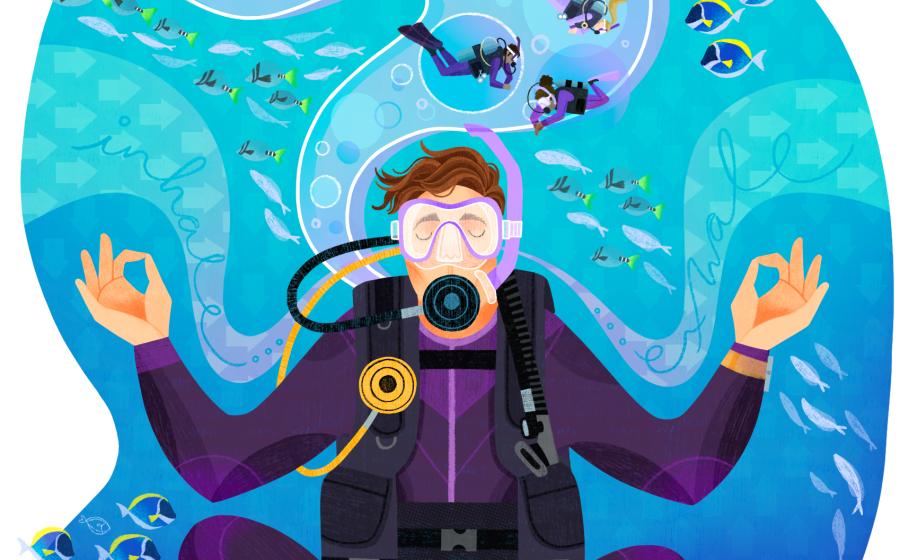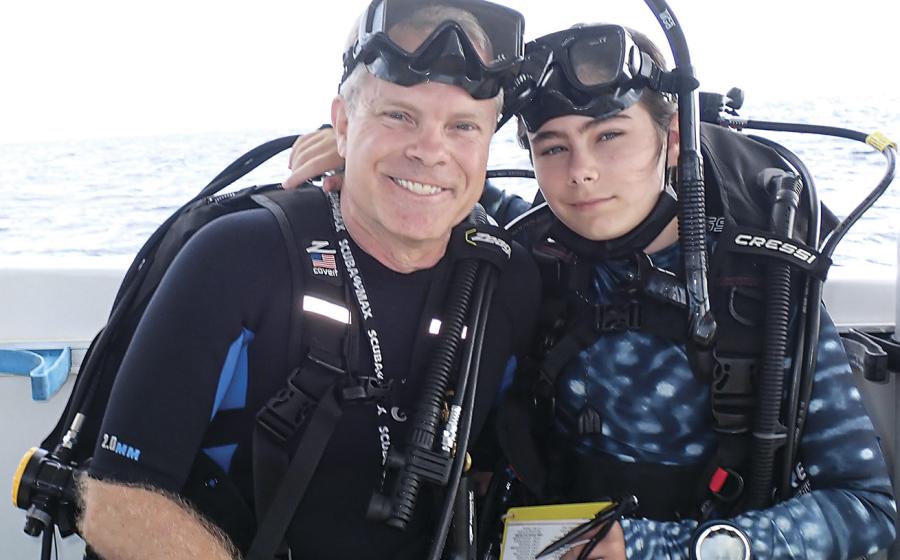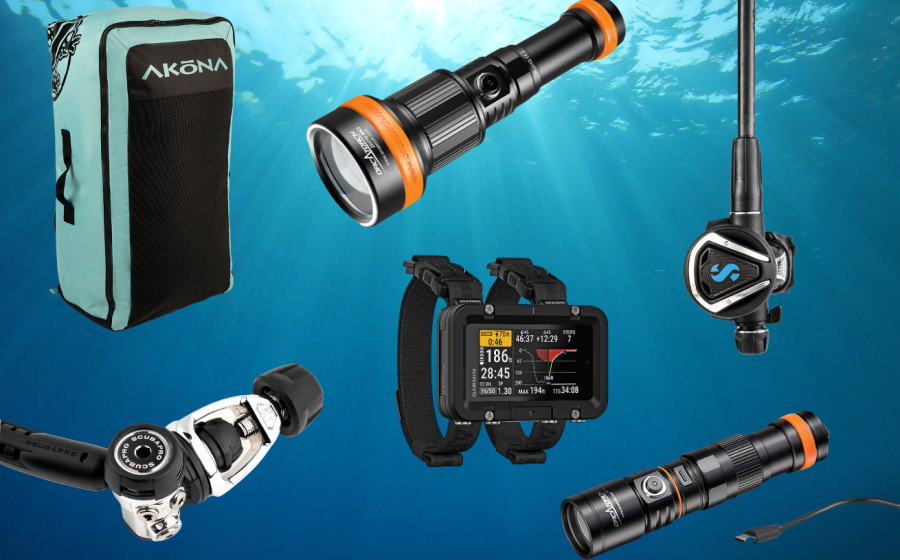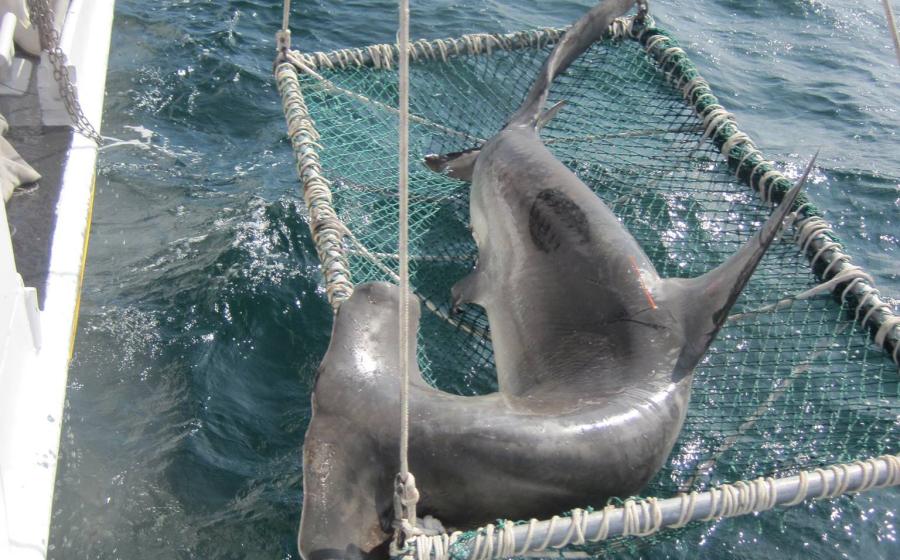Belize Diving aboard the Nekton Pilot - Dec '07
| I did not know what to expect as I headed down to Belize for a week of diving. I had heard that it was home to the largest reef system in our hemisphere, but that was about it. Due to its proximity to Honduras I guess I thought in the back of my mind that it would be very similar to the diving in Curacao or Roatan. With that in mind I had really settled on my macro setup featuring a 100mm macro lens with a single strobe to focus on the little stuff. I was happy with that as the little stuff is fun and challenging to photograph. As is usual when you try to guess at what will be below the surface, I was wrong. Getting to Belize from Charlotte was very easy. There's a direct flight which takes a little less than three hours. It doesn't get much easier than that - which is very important due to the amount of "stuff" I have to carry. One checked bag has my dive gear and my clothes (not many clothes needed when your going to spend a week on a live-aboard dive boat), another checked bag (pelican case actually) for the underwater housing, strobes, strobe batteries, and a 50mm macro lens port and a third checked bag for the remaining 100mm macro lens port, 8" dome port for the wide angle lens, various rings for zoom attachments and my nitrox analyzer. A direct flight and checking these three bags allows me to only carry my camera bag/backpack with cameras, lens, laptop, external disk drive, and various other digital gadgets needed for a week on a boat. The week was to be spent with Nekton Cruises, one of three primary live-aboard dive operations running out of Belize City. Flying in on Saturday and arriving around noon, a Nekton representative meets you at the airport (a relatively small place where immigration, baggage and customs are all contained in an area not much larger than most high school gymnasiums), gathers your luggage and yourself and transports you to a local hotel (The Princess hotel). I found that this is done for a couple of reasons. You need to go somewhere to spend the next 6 hours until it's time to go to the boat and they need you to go somewhere safe for you to spend this time. So Nekton has entered into agreements with the taxi service to meet and greet its arriving passengers and with the hotel to hold their passengers over for these 6 hours. Belize City was a major dissapointment for me. We took a stroll out of the hotel and wandered for several blocks through the surrounding neighborhoods and streets. That probably was not the brightest thing that I had done on this trip. Not that anyone said or did anything - because they did not - but we (my brother-in-law and I) were sitting ducks and stand-out targets of opportunity if there ever was such a thing. Belize was once British Honduras, but since independance it does not look like the local government has done much investing in the infrastructure. We did enjoy our over-priced food and drinks at the hotel during our wait, decided not to see a movie in the hotel theatre and avoided the hotel casino. At 6:30 PM the transportation guys showed up, gathered the guests and took us to a small local grocery store on our way to the marina where the boat awaited. The store stop is for those guests that want pick up some alchohol or soft drinks for the week as they are not provided on the boat. I bought a 2 litre bottle of diet coke, which must have been laced with gold given what I paid for it. Saturday night we arrived at the boat and were met by the crew. They welcomed us warmly and told us which room we had been assigned and were shown where it was. The crew had already placed our luggage in our rooms so I proceeded to unpack and settle in. Of course the first thing after settling in is the briefings by the captain and the crew. An overview of what will happen during the week, a talk about the boat in general, its safety features and location of all the gear needed in the event of an emergency, and introductions by all of the crew members and the captain. It was immediately obvious that this crew enjoyed what they did and viewed themselves as a team who were there to help you in any way they could. The captain was a soft spoken fella who came across as friendly, professional and knowledgable about the reefs, quays, and the boat. After all the formalities were over and the boat left the dock and headed to sea, most folks headed off to bed as they had been traveling since the early morning hours of the day. On a live-aboard the daily agenda is as follows. Breakfast at 6:30, morning dive site briefing at 8am, pool open from 8:30 to 11:45, lunch at noon while the boat moves to the afternoon dive site, 1pm is the afternoon dite site briefing, pool open from 1:30 to 5:45, dinner at 6pm, night dive briefing at 8pm followed by the night dive. This is the schedule for Sunday through Friday (no afternoon diving on Friday due to flights on Saturday and Friday has a dawn dive if you care to wake up before even the chickens have). This translates into eat, dive, eat, dive, eat, dive, eat dive, eat, dive, sleep. Do this 5 days in a row!! Diving on these reefs in Belize was fantastic. The health of the reefs, the abundance of life, the variety of fish, coral, sponges, rays, shellfish, octopus, squid, etc was unlike most diving I've experienced in the Caribbean. Most of the dive profiles allowed for a crusie along a wall at whatever depth you choose (watch your gauges as the bottom is not visible) followed by a return swim to the boat at the top of the wall - with nitrox filled steel 95 tanks this translates into minimum 1 hour dives. What stands out is the abundance of healthy coral, sponges and marine life at all depths of these profiles. Not only the abundance, but the size of the coral and sponges. Most diving in the Caribbean has nice coral, but the size of these in Belize stands out. Barrel sponges larger than yourself, sea plumes that look like small trees, huge brain coral formations and a diversity of coral and sponges found in dense configurations that are consistent throughout your dive - not found in little patches, but the entire wall. The clarity of the water - as evidenced in the wide angle photographs - also stood out on most days and most sites. There was little to no current all week. Only one site that we visited had any appreciable surge in the shallows. I later learned that there was a late season tropical storm that had passed a few hundred miles from us during the week. I did remember hearing the captain talk to one of the guests about it but he dismissed it as being nowhere near us - which it wasn't. The water temp was a refreshing 27c - about equal to the surface temperature - with no thermo-climes recorded on any of my dives. I wore a 3/2 wetsuit all week and was very comfortable. I should mention the food since it is a staple in the daily agenda! :-) Arminda is the cook and she is a wonderful ;pca; Belizian lady who takes personal pleasure in your enjoyment of her food. If you need anything just tell her and she will do everything she can to accomodate you. There's a reason she has been with this boat for 7 years. Her breakfasts varied every morning, a snack was prepared every morning and afternoon, a hot lunch was available every day and a tasty filling dinner was promptly served at 6 each evening. It always amazes me that so many people can be fed such good food on a live-aboard dive boat. Remember, this is not a cruise ship, it's a dive boat with a fairly small galley for cooking. The Nekton Pilots dining area/salon was spacious enough for the guests to spread out, eat and discuss the previous dives and experiences. On this trip, the guests shared their passions and experiences of the day as the crew also joined in on the conversations. I enjoyed that. On several evenings one of the crew members would hold a discussion on topics of interest after dinner and prior to the night dive. These included a fish ID forum, a talk about turtles, and a guest photo sharing on Friday evening. The week went by too fast, but after 23 dives (I skipped 3 dives during the week) I was ready to call it a week and head home (of course now I'm ready to go back!). Friday evening was spent docked at the marina. After dinner and the photo show I packed up all my gear and prepared to head back home. Saturdays transport to the airport and subsequent flight back home were as uneventful as the trip down to Belize - all a good thing. All in all I had a wonderful week of diving and fellowship with other divers. After completing my review of the pictures I had taken - all 930 of them - I had trouble getting it paired down to just 100 to put on the website, although I did get it down to 113. I was particularly pleased with the wide-angle photo's of the coral formations. The clarity of the water allowed for these to be taken without the use of strobes. Feel free to have a look through the Underwater gallery or specifically the Belize '07 gallery and share your comments or questions with me. I always enjoy discussing diving and underwater photography! |  |
||
| Milk Conch |
 |
| Sea Plumes |
 |
| Caribbean Reef Octopus |
| Related Links |
| Diving reports |
| Belize Dive Images |
| Monty Underwater Images |
| I did not know what to expect as I headed down to Belize for a week of diving. I had heard that it was home to the largest reef system in our hemisphere, but that was about it. Due to its proximity to Honduras I guess I thought in the back of my mind that it would be very similar to the diving in Curacao or Roatan. With that in mind I had really settled on my macro setup featuring a 100mm macro lens with a single strobe to focus on the little stuff. I was happy with that as the little stuff is fun and challenging to photograph. As is usual when you try to guess at what will be below the surface, I was wrong. Getting to Belize from Charlotte was very easy. There's a direct flight which takes a little less than three hours. It doesn't get much easier than that - which is very important due to the amount of "stuff" I have to carry. One checked bag has my dive gear and my clothes (not many clothes needed when your going to spend a week on a live-aboard dive boat), another checked bag (pelican case actually) for the underwater housing, strobes, strobe batteries, and a 50mm macro lens port and a third checked bag for the remaining 100mm macro lens port, 8" dome port for the wide angle lens, various rings for zoom attachments and my nitrox analyzer. A direct flight and checking these three bags allows me to only carry my camera bag/backpack with cameras, lens, laptop, external disk drive, and various other digital gadgets needed for a week on a boat. The week was to be spent with Nekton Cruises, one of three primary live-aboard dive operations running out of Belize City. Flying in on Saturday and arriving around noon, a Nekton representative meets you at the airport (a relatively small place where immigration, baggage and customs are all contained in an area not much larger than most high school gymnasiums), gathers your luggage and yourself and transports you to a local hotel (The Princess hotel). I found that this is done for a couple of reasons. You need to go somewhere to spend the next 6 hours until it's time to go to the boat and they need you to go somewhere safe for you to spend this time. So Nekton has entered into agreements with the taxi service to meet and greet its arriving passengers and with the hotel to hold their passengers over for these 6 hours. Belize City was a major dissapointment for me. We took a stroll out of the hotel and wandered for several blocks through the surrounding neighborhoods and streets. That probably was not the brightest thing that I had done on this trip. Not that anyone said or did anything - because they did not - but we (my brother-in-law and I) were sitting ducks and stand-out targets of opportunity if there ever was such a thing. Belize was once British Honduras, but since independance it does not look like the local government has done much investing in the infrastructure. We did enjoy our over-priced food and drinks at the hotel during our wait, decided not to see a movie in the hotel theatre and avoided the hotel casino. At 6:30 PM the transportation guys showed up, gathered the guests and took us to a small local grocery store on our way to the marina where the boat awaited. The store stop is for those guests that want pick up some alchohol or soft drinks for the week as they are not provided on the boat. I bought a 2 litre bottle of diet coke, which must have been laced with gold given what I paid for it. Saturday night we arrived at the boat and were met by the crew. They welcomed us warmly and told us which room we had been assigned and were shown where it was. The crew had already placed our luggage in our rooms so I proceeded to unpack and settle in. Of course the first thing after settling in is the briefings by the captain and the crew. An overview of what will happen during the week, a talk about the boat in general, its safety features and location of all the gear needed in the event of an emergency, and introductions by all of the crew members and the captain. It was immediately obvious that this crew enjoyed what they did and viewed themselves as a team who were there to help you in any way they could. The captain was a soft spoken fella who came across as friendly, professional and knowledgable about the reefs, quays, and the boat. After all the formalities were over and the boat left the dock and headed to sea, most folks headed off to bed as they had been traveling since the early morning hours of the day. On a live-aboard the daily agenda is as follows. Breakfast at 6:30, morning dive site briefing at 8am, pool open from 8:30 to 11:45, lunch at noon while the boat moves to the afternoon dive site, 1pm is the afternoon dite site briefing, pool open from 1:30 to 5:45, dinner at 6pm, night dive briefing at 8pm followed by the night dive. This is the schedule for Sunday through Friday (no afternoon diving on Friday due to flights on Saturday and Friday has a dawn dive if you care to wake up before even the chickens have). This translates into eat, dive, eat, dive, eat, dive, eat dive, eat, dive, sleep. Do this 5 days in a row!! Diving on these reefs in Belize was fantastic. The health of the reefs, the abundance of life, the variety of fish, coral, sponges, rays, shellfish, octopus, squid, etc was unlike most diving I've experienced in the Caribbean. Most of the dive profiles allowed for a crusie along a wall at whatever depth you choose (watch your gauges as the bottom is not visible) followed by a return swim to the boat at the top of the wall - with nitrox filled steel 95 tanks this translates into minimum 1 hour dives. What stands out is the abundance of healthy coral, sponges and marine life at all depths of these profiles. Not only the abundance, but the size of the coral and sponges. Most diving in the Caribbean has nice coral, but the size of these in Belize stands out. Barrel sponges larger than yourself, sea plumes that look like small trees, huge brain coral formations and a diversity of coral and sponges found in dense configurations that are consistent throughout your dive - not found in little patches, but the entire wall. The clarity of the water - as evidenced in the wide angle photographs - also stood out on most days and most sites. There was little to no current all week. Only one site that we visited had any appreciable surge in the shallows. I later learned that there was a late season tropical storm that had passed a few hundred miles from us during the week. I did remember hearing the captain talk to one of the guests about it but he dismissed it as being nowhere near us - which it wasn't. The water temp was a refreshing 27c - about equal to the surface temperature - with no thermo-climes recorded on any of my dives. I wore a 3/2 wetsuit all week and was very comfortable. I should mention the food since it is a staple in the daily agenda! :-) Arminda is the cook and she is a wonderful ;pca; Belizian lady who takes personal pleasure in your enjoyment of her food. If you need anything just tell her and she will do everything she can to accomodate you. There's a reason she has been with this boat for 7 years. Her breakfasts varied every morning, a snack was prepared every morning and afternoon, a hot lunch was available every day and a tasty filling dinner was promptly served at 6 each evening. It always amazes me that so many people can be fed such good food on a live-aboard dive boat. Remember, this is not a cruise ship, it's a dive boat with a fairly small galley for cooking. The Nekton Pilots dining area/salon was spacious enough for the guests to spread out, eat and discuss the previous dives and experiences. On this trip, the guests shared their passions and experiences of the day as the crew also joined in on the conversations. I enjoyed that. On several evenings one of the crew members would hold a discussion on topics of interest after dinner and prior to the night dive. These included a fish ID forum, a talk about turtles, and a guest photo sharing on Friday evening. The week went by too fast, but after 23 dives (I skipped 3 dives during the week) I was ready to call it a week and head home (of course now I'm ready to go back!). Friday evening was spent docked at the marina. After dinner and the photo show I packed up all my gear and prepared to head back home. Saturdays transport to the airport and subsequent flight back home were as uneventful as the trip down to Belize - all a good thing. All in all I had a wonderful week of diving and fellowship with other divers. After completing my review of the pictures I had taken - all 930 of them - I had trouble getting it paired down to just 100 to put on the website, although I did get it down to 113. I was particularly pleased with the wide-angle photo's of the coral formations. The clarity of the water allowed for these to be taken without the use of strobes. Feel free to have a look through the Underwater gallery or specifically the Belize '07 gallery and share your comments or questions with me. I always enjoy discussing diving and underwater photography! |  |
||
| Milk Conch |
 |
| Sea Plumes |
 |
| Caribbean Reef Octopus |
| Related Links |
| Diving reports |
| Belize Dive Images |
| Monty Underwater Images |

